While COVID-19 had myriad repercussions for brick-and-mortar stores, the pop-up craze helped one of Seoul’s neighborhoods to take off. In Seongsu-dong, diverse pop-ups are held year-round and have become an integral part of the area’s identity.
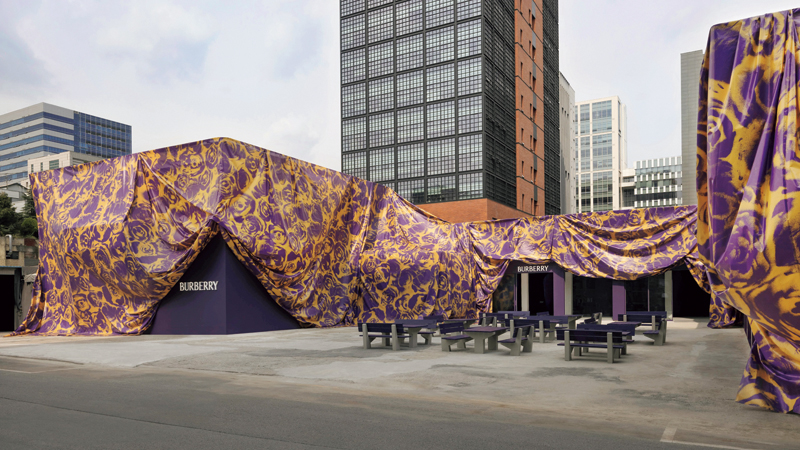
One of the most talked about pop-up stores of 2023, Seongsu Rose featured the first collection by Burberry’s creative director Daniel Lee.
ⓒ Burberry Korea
All week long, the streets of Seongsu-dong are packed with people, many lining up to get into the neighborhood’s latest pop-up stores. Such stores are hosted at brick-and-mortar locations and operate for a limited time only. They may run for two to three days or for as long as six months and can be found across Korea’s urban centers. The pop-ups in Seongsu-dong are particularly popular, with lists of the latest ones constantly circulating on social media. A cursory scroll is enough to come across people tagging their friends in the comments and saying things like, “Let’s check this one out next time!”
THE CHARMS OF SEONGSU-DONG
The reason so many brands choose Seongsu-dong for their pop-ups is simple: it is currently the city’s hottest commercial area. One of its appeals is its geography, with the nearby Seoul Forest and Ttukseom Han River Park providing a welcome reprieve from the bustling alleys and setting the neighborhood apart from other hotspots in Seoul. Its abundance of commercial facilities and luxury apartments caters to residents and customers alike. Most notably, rents are relatively low here compared to neighborhoods south of the river in Seoul’s upmarket Gangnam District.
Another big attraction is the harmonious blend of the old and new. Until the 1980s, Seongsu-dong was an industrial area, known for Korea’s largest ready-mix concrete production facility and primarily made up of ironworks, printing shops, auto repair shops, and shoe factories. However, the 1997 Asian financial crisis bankrupted many of these businesses and the neighborhood experienced a downturn. The tide finally turned in the 2000s, when young entrepreneurs began moving in, attracted by the area’s low rents and unconventional character. They converted the former factories and warehouses into cafés, restaurants, and boutiques, a trend that has continued, creating an atmosphere defined by eclectic combinations of traditionally disparate elements.
As Seongsu-dong drew in young fashionistas, the retail industry soon followed. Physical stores and online brands began opening pop-ups to amplify their presence. Thanks to its many spacious buildings, Seongsu-dong is especially well-suited for large-scale pop-up stores.
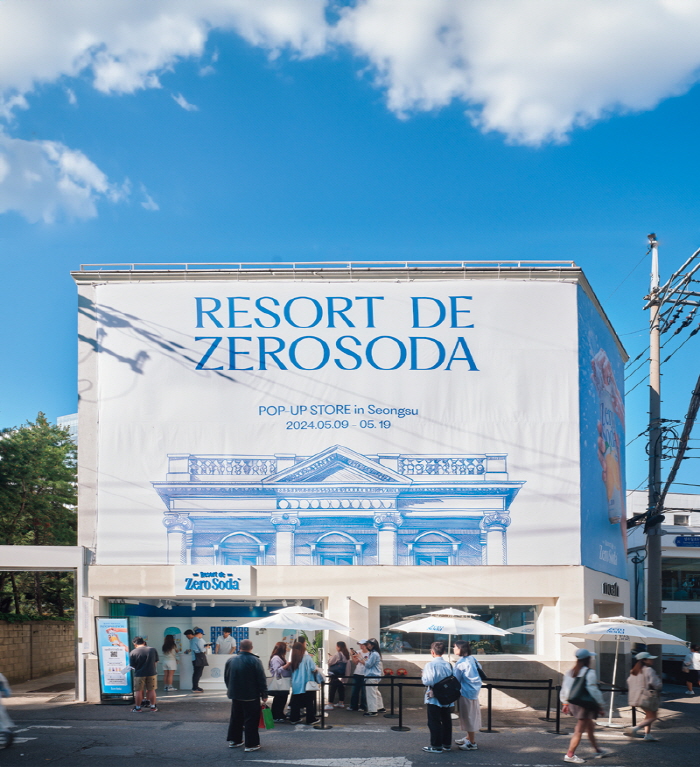
The ZeroSoda pop-up store by beverage brand CLOOP was popular for providing participants who completed a tour mission with amenity kits, while giving them an opportunity to ride a rickshaw around Seongsu-dong.
POP-UP SPACES
In a typical week, the neighborhood sees more than 50 pop-up openings. The most popular rental locations are those with lots of floor space and easy access to public transportation. Among these, the COMMON GROUND complex stands out for its appearance. Opened in 2015 between Seongsu-dong and Konkuk University station, Korea’s first pop-up shopping mall is composed of 200 containers. Aside from pop-ups, it also hosts a wide range of cultural events, including fan signings by K-pop artists. Another popular spot is SFACTORY, a cultural space located on Yeonmujang-gil that opened in 2016. It comprises four remodeled buildings from the 1970s: a textile factory, a gymnasium, a dormitory, and an auto repair shop. These days, SFACTORY hosts large-scale events such as art fairs, concerts, and conferences.
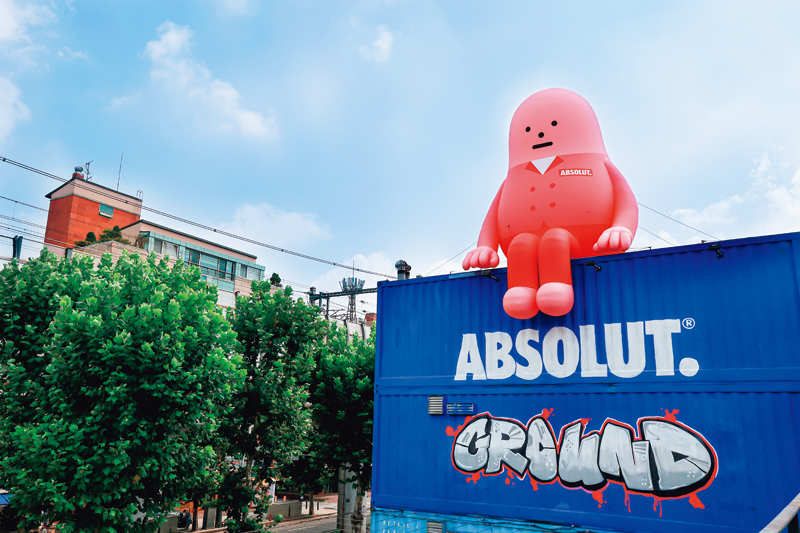
Unexpected collaborations have been a key element in the genesis of Seongsu-dong’s pop-up craze. This Absolut Vodka pop-up at COMMON GROUND in August 2023 was a collaboration between Korean design studio Sticky Monster Lab and the Swedish alcohol brand.
ⓒ The Absolut Group
Seongsu-dong’s cafés and cultural spaces such as Daelim Changgo, MARK69, and Scène also serve as popular locations for pop-ups. While some companies, including fashion retailer MUSINSA with SQUARE Seongsu, have taken to operating their own pop-up spaces, other brands rely on the recently emerging pop-up rental industry. According to local real estate agents, the most desirable locations are already fully booked through 2025. Businesses such as Project Rent even go beyond space rental to meet more comprehensive pop-up needs, from content planning to marketing and actual operations.
EVER-EXPANDING EXPERIENCES
Over the years, a wide range of companies has run pop-ups in Seongsu-dong, offering everything from beauty, fashion, lifestyle, and food & beverages to automobiles, art, K-pop, movies, and popular characters. Domestic brands were joined by global corporations that opened special pop-ups and showrooms. Last fall, as part of its global “Burberry Streets” project, the British luxury fashion brand hosted pop-up stores at three separate locations, dubbed Seongsu Rose, Seongsu Bottle, and Seongsu Shoe. For about a month, their colorful banners of dreamy purple and yellow roses transformed Seongsu-dong’s Yeonmujang-gil.
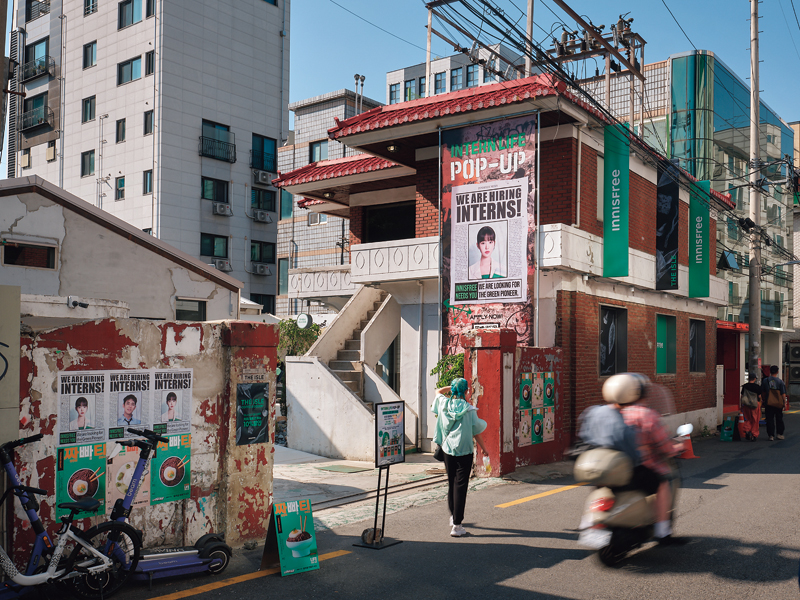
Pop-up at THE ISLE Innisfree Seongsu Flagship Store in April and May 2024. The beauty brand’s pop-up store successfully attracted a plethora of young, creative talent in a back alley formerly dominated by factories and warehouses.
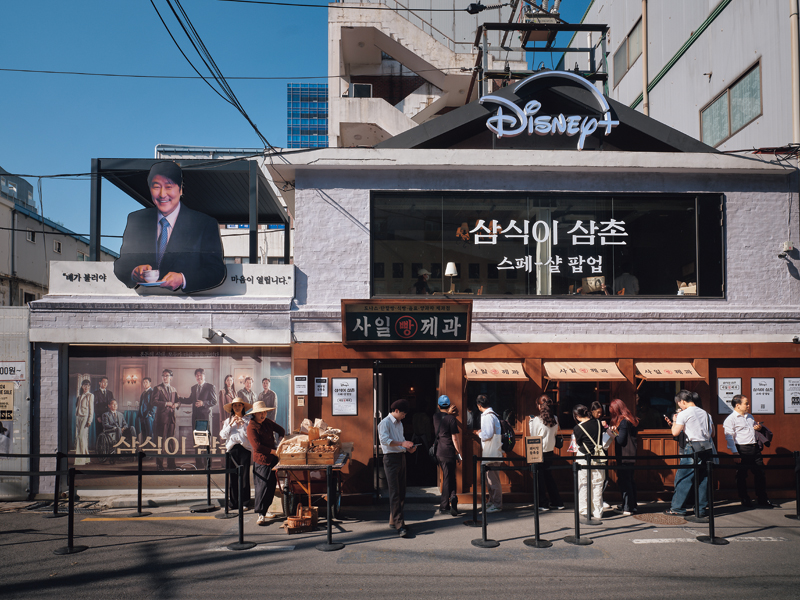
A view of the pop-up store that Disney+ hosted in May 2024 on Yeonmujang-gil, ahead of the premiere of its original series Uncle Samsik. Consisting of a bakery and an office, the storefront was designed to resemble the setting of the show.
More recent pop-ups go further than simply displaying and selling products to include games, colorful visual art, and a variety of interactive experiences. As a result, creative planning and professional marketing have become essential to their success.
Some examples include Plop Sunyang, a highly acclaimed experience zone launched last winter by liquor brand Sunyang, which visitors could only enter by boat. Sunyang Casino, which opened in April of this year, allowed guests to play games using chips they received at the entrance. Meanwhile, HITEJINRO caused a stir during the same month, when it opened its Jinro Gold Fantasia event in the form of an indoor theme park.
THE DOWNSIDE OF POP-UPS
The real estate market in Seongsu-dong has been immensely impacted by the pop-up culture. The costs and methods associated with pop-ups and events versus regular commercial rentals differ greatly. While specific figures vary depending on rental period, floor space, and location, weekly rental fees for large-scale spaces can reach 100 to 300 million won. Because there are no legal restrictions on such pricing structures, property owners can essentially charge whatever they please, making the pop-ups far more profitable for them than monthly rentals.
As a result, rents in Seongsu-dong have skyrocketed, and many now fear that the entire neighborhood could stagnate if older businesses are pushed out. Most of Seongsu-dong’s Galbi Alley, a mainstay for grilled beef since the 1970s, has already disappeared. Dozens of restaurants that once lined the famous street have gone out of business or been forced to relocate, leaving just two or three still standing. In short, Seongsu-dong has not been able to escape gentrification.
Still, real estate experts predict that the commercial area will sustain itself for longer than similar neighborhoods. This is because no matter when you visit, the sheer variety of ever-changing pop-up stores ensures a fresh and lively atmosphere that never gets boring.